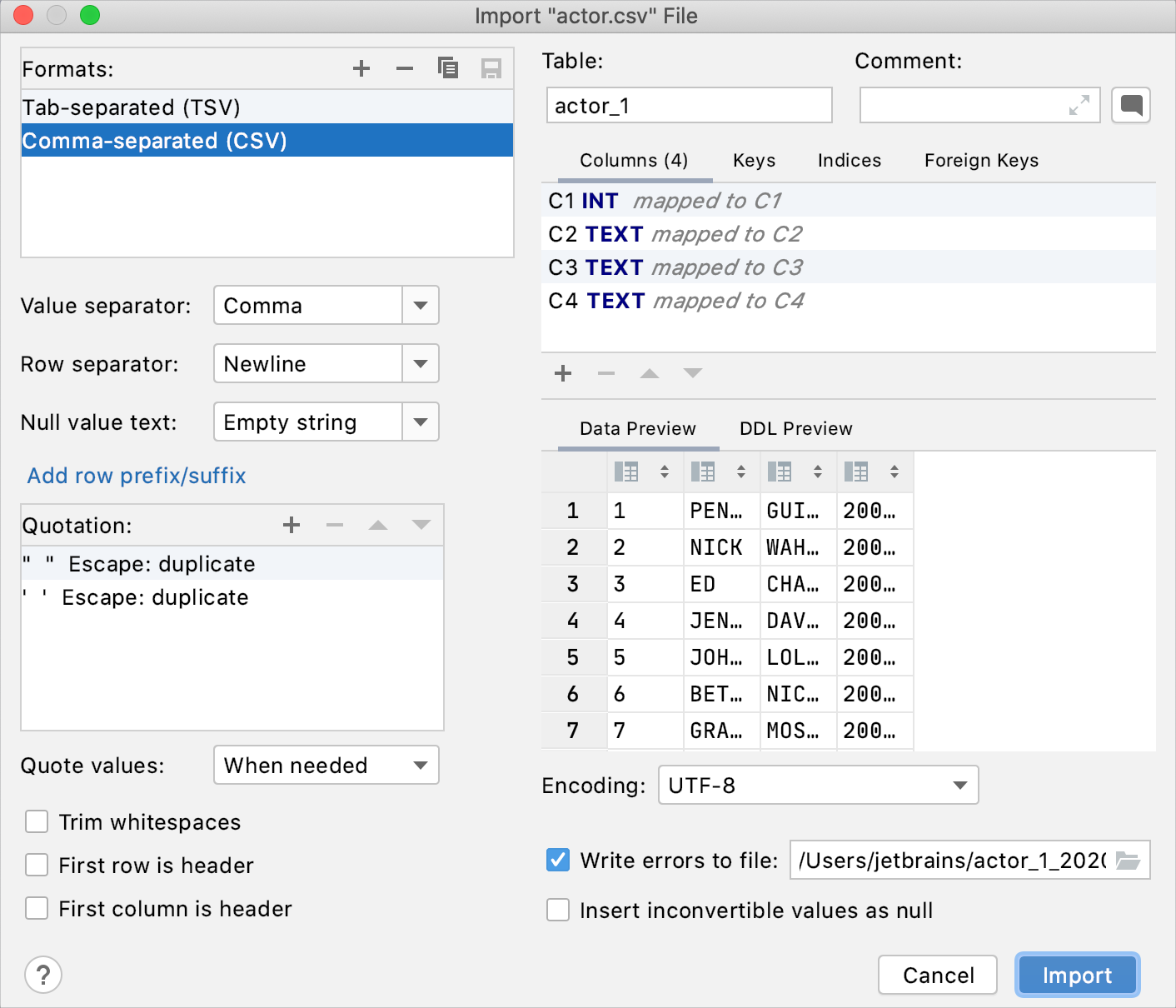The Import File dialog
In the Import File dialog, you can specify import settings for formats with delimiter-separated values. You can use the predefined templates or create a new one.

Conversion settings
When you change import settings, the import preview changes correspondingly.
| Item | Description |
|---|---|
| Formats | Select a template that successfully converts the file data into a table. You can change settings of predefined templates or add a new template. To add a template, press Add Format button ( To save changes, click the Save icon
|
| Value separator | Select or type the character that you want to use as a separator for values. |
| Row separator | Select or type the character that you want to use as a separator for rows. |
| Null value text | Select or type the text that you want to use if a cell contains the NULL value. |
| Add row prefix/suffix | Click the link and type a row prefix and suffix. Prefix and suffix are character sequences which in addition to the row separator indicate the beginning and end of a row. |
| Quotation | Each line in the area under Quotation is a quotation pattern (see Quote values). A quotation pattern includes:
If there is more than one pattern, the first pattern is used. Use |
| Quote values | Select when you want to enclose values within quotation characters.
|
| Trim whitespaces | Ignore or remove whitespace characters. If this checkbox is cleared, the whitespace characters are treated as parts of the corresponding values. |
| First row is header | Treat the first row as a row that contains column names. |
| First column is header | Treat the first column as a column that contains row names. |
Table name, structure and data mappings
| Item | Description |
|---|---|
| Table | The name of the table. |
| Comment | The table comment. |
| Columns / Keys / Indexes / Foreign Keys | Data mappings and definitions of columns, keys, and indexes. Double-click the line to start editing. The Mapped to field specifies relation of a data column from the file and the corresponding column in the database. If you clear this field, no data is added to the target column in the database. To remove a column, select the corresponding line and click the Remove button |
Data and DDL previews
| Item | Description |
|---|---|
| Data preview | The generated preview of how your data will be imported to the database. |
| DDL preview | A statement or statements that DataGrip will run to create a table. You can edit the statements in the DDL preview field. |
Encoding, errors, and logs
| Item | Description |
|---|---|
| Encoding | Select the character encoding for your data in the source file. |
| Write errors to file | Write errors that occur during the import in a text file. |
| Insert inconvertible values as null | Insert the NULL value into the table instead of the data that cannot be converted. |